
Filter News
Area of Research
- Advanced Manufacturing (3)
- Biological Systems (1)
- Biology and Environment (21)
- Computational Biology (2)
- Computational Engineering (1)
- Computer Science (6)
- Energy Science (59)
- Fusion and Fission (18)
- Fusion Energy (11)
- Isotopes (5)
- Materials (35)
- Materials for Computing (8)
- National Security (22)
- Neutron Science (81)
- Nuclear Science and Technology (11)
- Quantum information Science (7)
- Supercomputing (52)
- Transportation Systems (2)
News Type
News Topics
- (-) Artificial Intelligence (92)
- (-) Biomedical (53)
- (-) Cybersecurity (17)
- (-) Fusion (47)
- (-) Machine Learning (51)
- (-) Neutron Science (109)
- (-) Quantum Science (58)
- (-) Security (17)
- (-) Statistics (3)
- (-) Transportation (66)
- 3-D Printing/Advanced Manufacturing (89)
- Advanced Reactors (25)
- Big Data (62)
- Bioenergy (84)
- Biology (100)
- Biotechnology (28)
- Buildings (50)
- Chemical Sciences (48)
- Clean Water (30)
- Composites (21)
- Computer Science (153)
- Coronavirus (30)
- Critical Materials (17)
- Education (2)
- Emergency (4)
- Energy Storage (64)
- Environment (164)
- Exascale Computing (52)
- Fossil Energy (7)
- Frontier (45)
- Grid (54)
- High-Performance Computing (93)
- Hydropower (12)
- Irradiation (2)
- Isotopes (38)
- ITER (7)
- Materials (87)
- Materials Science (89)
- Mathematics (11)
- Mercury (10)
- Microelectronics (3)
- Microscopy (34)
- Molten Salt (7)
- Nanotechnology (29)
- National Security (63)
- Nuclear Energy (85)
- Partnerships (37)
- Physics (38)
- Polymers (18)
- Quantum Computing (39)
- Simulation (51)
- Software (1)
- Space Exploration (23)
- Summit (48)
Media Contacts
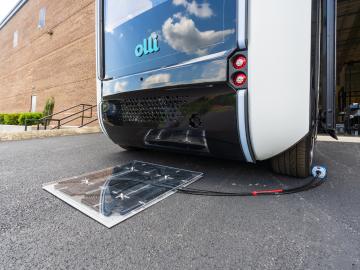
Oak Ridge National Laboratory researchers demonstrated their wireless charging technology on an autonomous electric vehicle for the first time in a project with Local Motors.
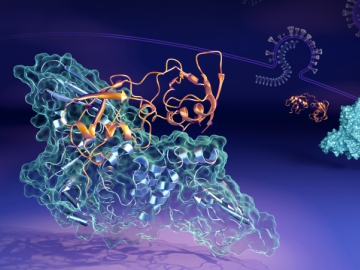
Scientists at Oak Ridge National Laboratory have uncovered how the SARS-CoV-2 virus evades the human immune system by studying the interaction between a viral protein (PLpro) and a key immune protein (ISG15). These insights could guide the development of therapeutic drugs to block this interaction, enhancing the body’s ability to combat the virus.

An ORNL-led team comprising researchers from multiple DOE national laboratories is using artificial intelligence and computational screening techniques – in combination with experimental validation – to identify and design five promising drug therapy approaches to target the SARS-CoV-2 virus.
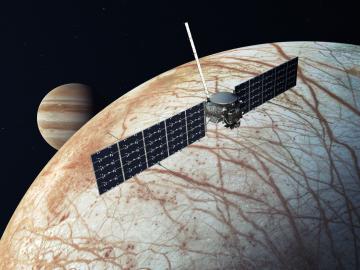
Researchers from NASA’s Jet Propulsion Laboratory and Oak Ridge National Laboratory successfully created amorphous ice, similar to ice in interstellar space and on icy worlds in our solar system. They documented that its disordered atomic behavior is unlike any ice on Earth.

Scientists at Oak Ridge National Laboratory have developed a solvent that results in a more environmentally friendly process to recover valuable materials from used lithium-ion batteries, supports a stable domestic supply chain for new batteries
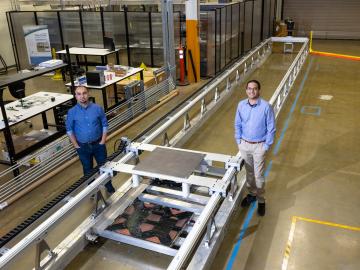
Consumer buy-in is key to the future of a decarbonized transportation sector in which electric vehicles largely replace today’s conventionally fueled cars and trucks.

Deborah Frincke, one of the nation’s preeminent computer scientists and cybersecurity experts, serves as associate laboratory director of ORNL’s National Security Science Directorate. Credit: Carlos Jones/ORNL, U.S. Dept. of Energy
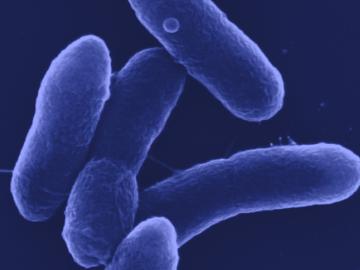
A research team led by Oak Ridge National Laboratory bioengineered a microbe to efficiently turn waste into itaconic acid, an industrial chemical used in plastics and paints.

At the Department of Energy’s Oak Ridge National Laboratory, scientists use artificial intelligence, or AI, to accelerate the discovery and development of materials for energy and information technologies.

Belinda Akpa is a chemical engineer with a talent for tackling big challenges and fostering inclusivity and diversity in the next generation of scientists.


